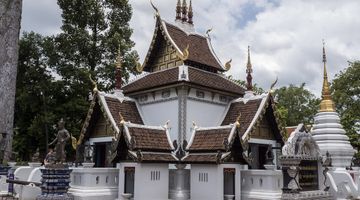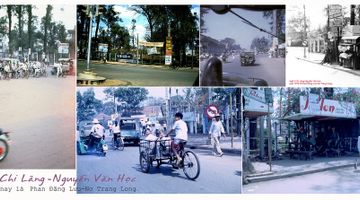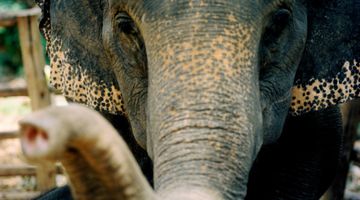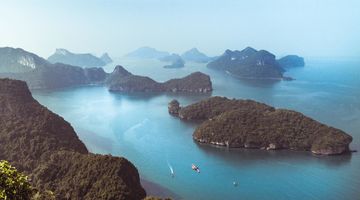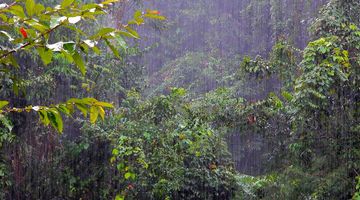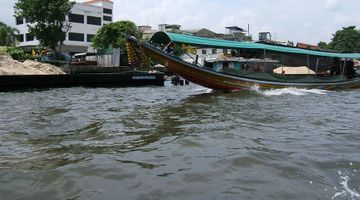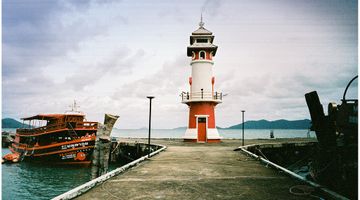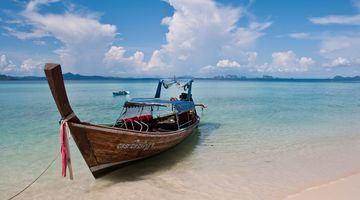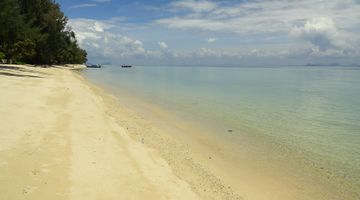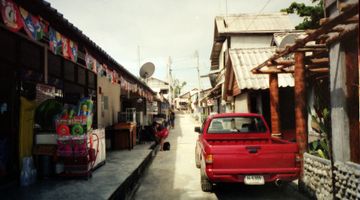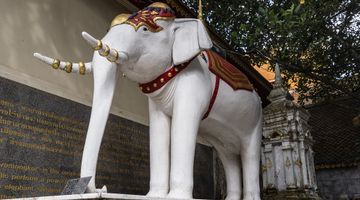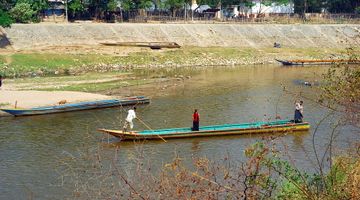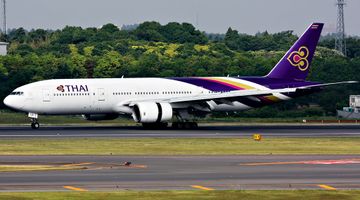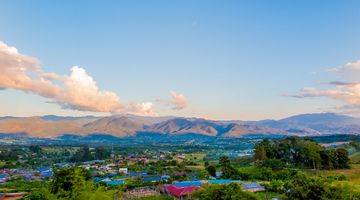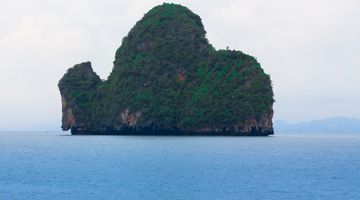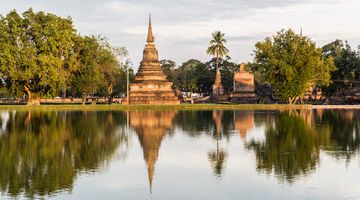Koh Lanta Travel Guide
In a nutshell
Koh Lanta is the Achilles heel of the Andaman Sea, and until more recently it wasn’t on everyone’s radar as much, which has meant that the island has benefitted from a slower up take of westernisation, and subsequently those ‘touristy spots’ are fewer and far between.
Why go to Koh Lanta
The real draw of Koh Lanta is its (nine!) uncrowded spotless sandy beaches skirting along both west and east coasts. Not only do the kilometres of coastline, crystal waters, and colourful corals make this place an island paradise, but as a National Park you can also enjoy the lush jungles and nature trails at the southern end of the island, too.
Koh Lanta is an unmistakably calmer and more collected option when choosing among the Thai islands and it’s been hard to keep it a secret for this long… Enjoy it while you can, before the word gets really out!
So why go? Why not go! You’d be crazy to pass up a visit to Koh Lanta if you’re ever ‘in the area’ or planning an epic Thailand trip. We’re actively encouraging you to add it to your itinerary whatever your circumstance.
Imagine white sandy beaches, endless views of the ocean, delicious seafood (caught that day!), laid back bars with tempting sundowners, unbeatable sunsets…we could go on. It’s no surprise that Koh Lanta is one of our favourite Thai islands and with over 30kms of coastline to explore you’ll never get bored, each beach and cove has its own unique vibe.
What’s not to like? If you’re looking for alternative activities to being a beach bum, there is plenty to keep you busy aside from sunbathing, such as island hopping, or yoga. If you like volunteering, too, there’s an animal shelter where you can take the rescue dogs for walks and sit and pet the cats until your heart’s content. Only in Koh Lanta!
When to go to Koh Lanta
Thailand has two main seasons: dry and wet with year-round temperatures averaging between 25-35 degrees Celsius.
The dry (high) season runs from November-April which sees the least amount of rainfall and usually the most cloudless days (bear in mind during March and April it can get very hot, dry, and dusty).
The wet (low) season, aka monsoon season, brings relief from the hotter drier months - but it is by no means cold! Although - as the saying goes - ‘when it rains, it pours,’ the rain never lasts long (an hour or two max) and you’ll soon be out in the sun again in no time. Plus, the good thing about visiting during the off-peak months is that you’ll often have the beaches and resorts completely to yourself.
Where to stay in Koh Lanta
Back in the day Koh Lanta used to be associated with backpackers and sea gypsies. Well, gone are the sea gyspies, and the backpackers still prevail, but now they’re joined with a welcome bunch of mid-range travellers – and the luxury are catching up, too.
Koh Lanta is becoming the ‘one to watch’ and hostels and hotels have caught on, offering accommodation options for the really budget, to the really flash.
The more budget options tend to be found nearer the northern end of the island, by Baan Saladan port, and the further south you go – where the beaches also stretch further – you can find more ‘grown up’ options from beachfront bungalows to sprawling resorts, priced at affordably luxurious, to the eye watering. You can also usually expect your hotel to come with a pool, too, should you ever bore of the beaches.
Where to eat in Koh Lanta
The food in Koh Lanta is pretty much like everywhere else in Thailand; you’ll find your fair share of budget local eateries, and you’ll get the western menus aimed at the tourists and travellers looking for some home comforts.
The west side of the island is certainly the more commercialised of the two and where you can find plenty of restaurants along the beach with flaming BBQs and wood fired pizzas.
Alternatively, on the east side of the island – the more local side – you’ll find smaller Thai run places with more authentic offerings. But across both sides you’ll be able to find seafood galore, and freshly caught that day!
Over the last few years many more fine dining options have also opened up along the coast in the more upmarket resorts, if you really fancy splashing the cash.
How to get around Koh Lanta
You do not have too many options to move around the island. Basically songthaews as taxis are the prevailing means of transport for tourists and those charge between THB150 and THB300 for travelling from one beach to another depending on the distance.
Motorbikes can be rented from many guesthouses or rental shops for about THB200-THB300 per day. And while it is not recommended to use then if you are not familiar with riding two wheels, Koh Lanta’s roads seems less treacherous than those of the other islands like Koh Phangan or Koh Tao, for instance as Koh Lanta is much flatter.
How to get to and from Koh Lanta
Koh Lanta is great in terms of transport links and you can arrive from Krabi, Ao Nang, Koh Phi Phi, or Phuket.
The ferry tickets will range from THB400-450 depending on the retailer and your haggling skills! If you are planning on coming from Krabi there are two options, the passenger ferry, or the car ferry. The passenger ferry runs between November – April, but outside of those months you can still get to the island by car ferry. You can expect the journey to take anywhere from 1 hour, to 2 hours and 45 minutes depending on which island you are coming from (Phuket is the farthest, Phi Phi is the closest). Tickets and transfers can be arranged at any local seller or at your accommodation.
Is Koh Lanta safe?
Thailand’s nicknamed ‘the land of smiles’ and you’ll certainly find this true in Koh Lanta. The locals are always ready and willing to help and accommodate. However, use your common sense and be wary of any scammers and always be mindful of your belongings when you are out.
The majority of the population in Koh Lanta are Muslim so be respectful of their culture and customs and also be tolerant of the daily calls to prayer.
Koh Lanta is also known by some adventurous travellers for its illegal substances which, although can be found openly on bar menus, you are advised to stay on the right side of the law and avoid any temptations. Not only do you not know what you are really buying and where it has come from, but Thailand has strict penalties for drugs. So be warned!




